They are functional, easy to install and allow you to create different designs on your walls.
html[data-range=”xlarge”] figure image img.img-ccf34b0a985ec89bdd2750ac1bd0183cvilwti8z { width: 774px; height: 516px; }HTML[data-range=”large”] figure image img.img-ccf34b0a985ec89bdd2750ac1bd0183cvilwti8z { width: 548px; height: 366px; }HTML[data-range=”small”] figure figure img.img-ccf34b0a985ec89bdd2750ac1bd0183cvilwti8z, html[data-range=”medium”] figure image img.img-ccf34b0a985ec89bdd2750ac1bd0183cvilwti8z { width: 564px; height: 376px; }
From the kitchen to the bedroom, through the living room and bathroom, the shelves they expand spaces and offer support to everything: works of art, sculptures, boxes, paintings, frames, books and even that precious collection that is hidden inside a wardrobe.
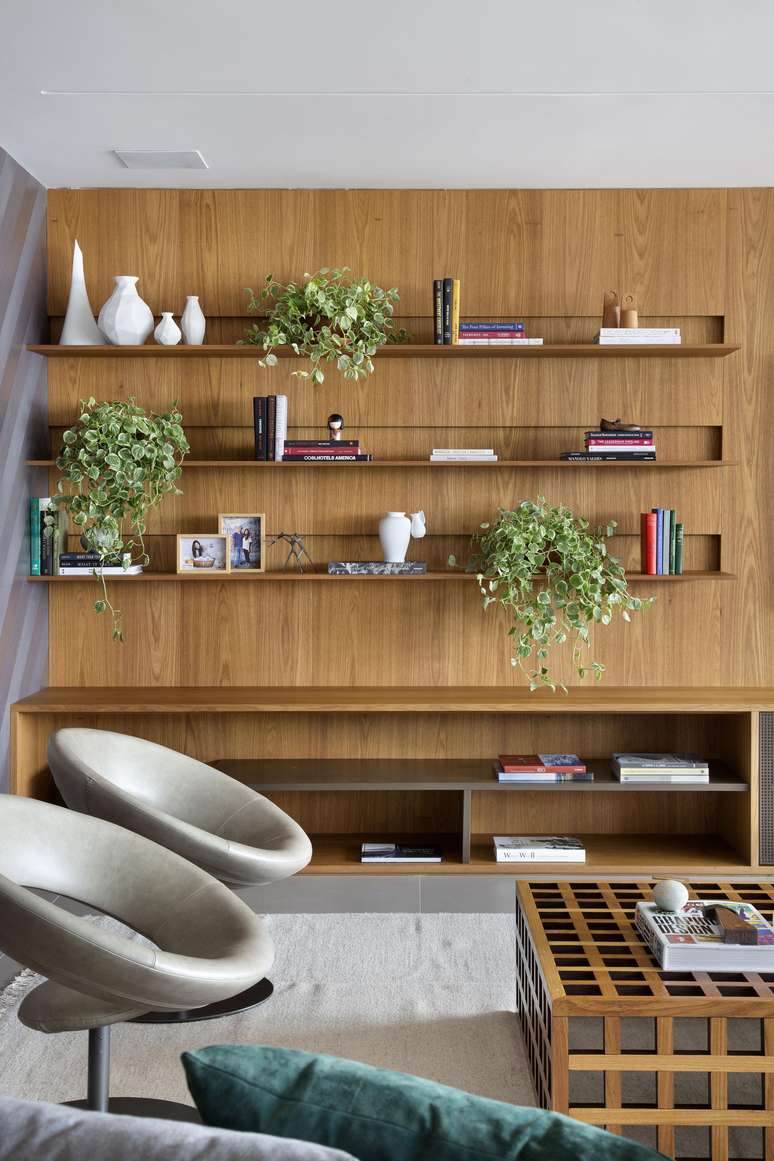
Although they are super practical options that adapt to the most diverse styles, the choice of the right model accompanies the type of installation, which is linked to the weight it will have to support, the measurements and how to favor the arrangement of the objects in a balanced aspect.
To make your planning work, check out architect Carina Dal Fabbro’s tips for anyone wanting to incorporate a shelf into their decor:
Choose the type of fastening
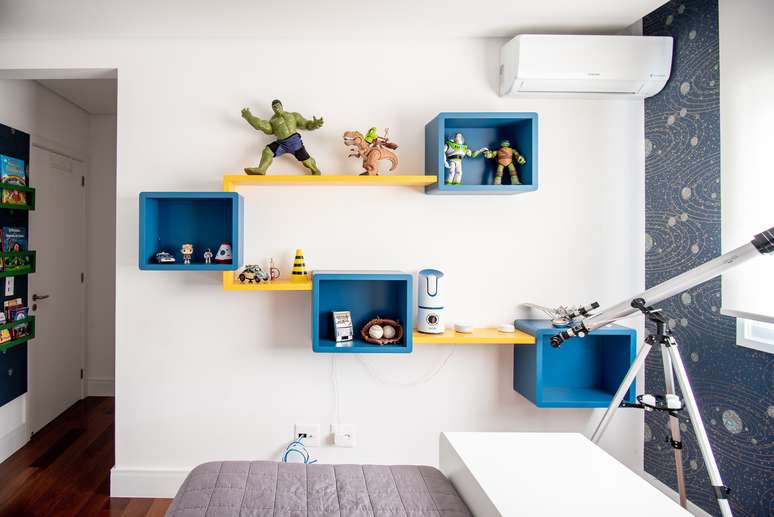
One of the first questions to decide is how to attach the parts: “We have options that cover different levels of complexity. The easiest way to install is to use the L bracket, which only requires holes to place dowels and screws. For those opting for racks, the challenge is a little bigger,” says Carina.
In this case, the holes for the bushings and screws are smaller, but there is a significant amount to place the guides. The challenge lies in caring measure the level between each rack so that the shelves are not crooked. Another possibility is to use an integrated or invisible support. Since it is a more difficult installation and requires larger holes in the walls, it is recommended that it be done by trained professionals.
Pay attention to the manufacturer’s recommendations
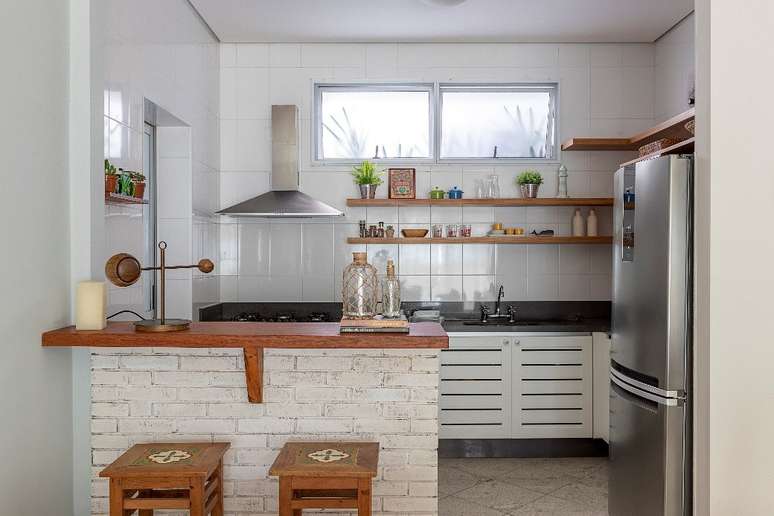
Another valuable tip is to always check the shelf size intends to invest and the estimated average weight it bears. Since this is technical information, when purchasing the piece, the architect indicates that the consumer is looking for complete information – such as the supported load, the maximum measurements between the holes and which hardware is recommended for the chosen piece.
Walls

Another key issue is knowing well the wall that will receive the piece. In an apartment or new house, respect the recommendations indicated on the plan provided by the builder.
For older houses, it is more difficult to know what is behind the wall or to have documentation. There is a logic, which is not a rule, with the plumbing, electric and gas points which can cross the wall following a horizontal or vertical line. Always be careful not to damage any of these points.
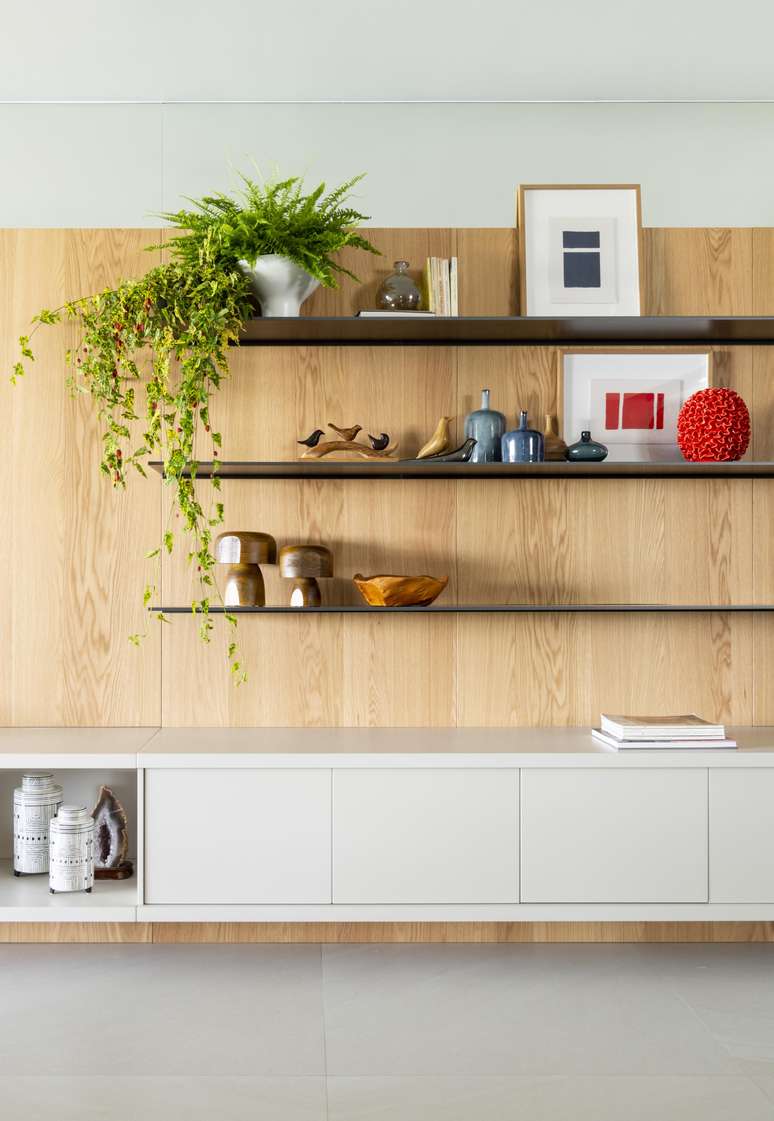
The big secret is to analyze the chosen wall well and perform the serve calmly. To avoid crooked holes, don’t forget to measure the distances with a tape measure and mark them with a pencil.
Installation on plasterboard walls
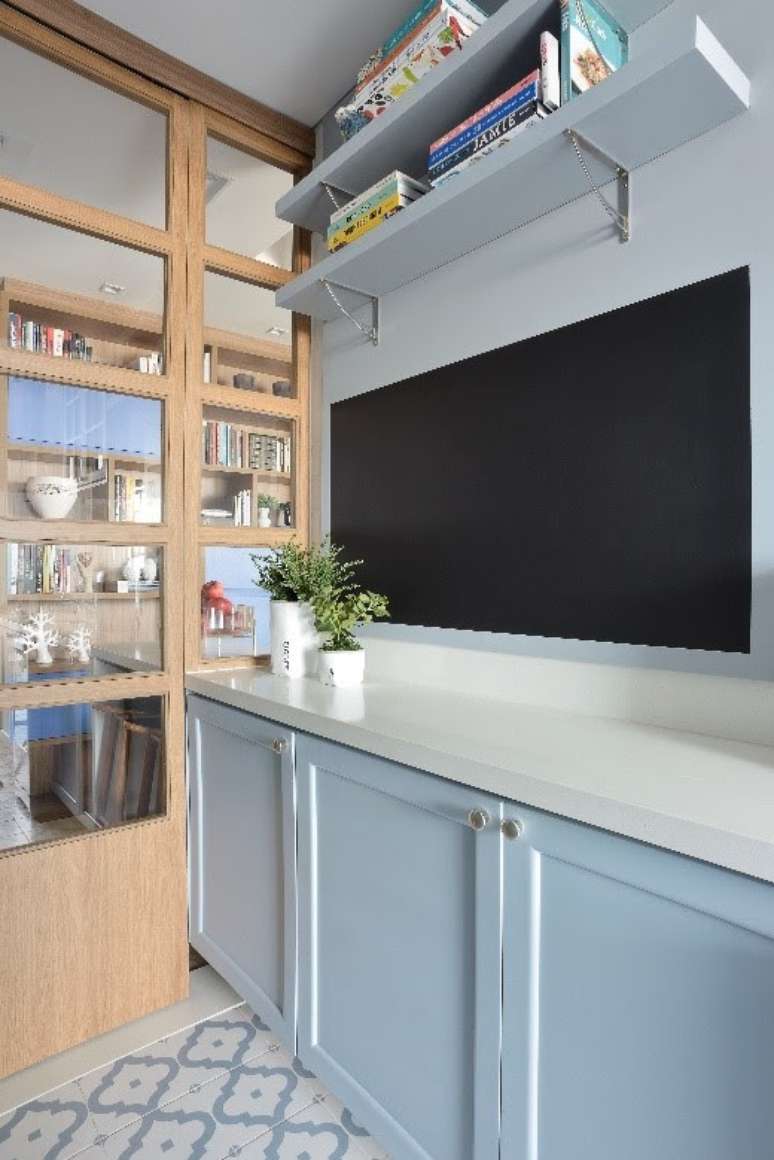
Despite the fear, it is possible to install shelves and TV stands on plasterboard walls. For this, the fixing must be done on a galvanized steel sheet – previously installed in the structural part of the wall -, in no case only on the plaster plate.
Weight
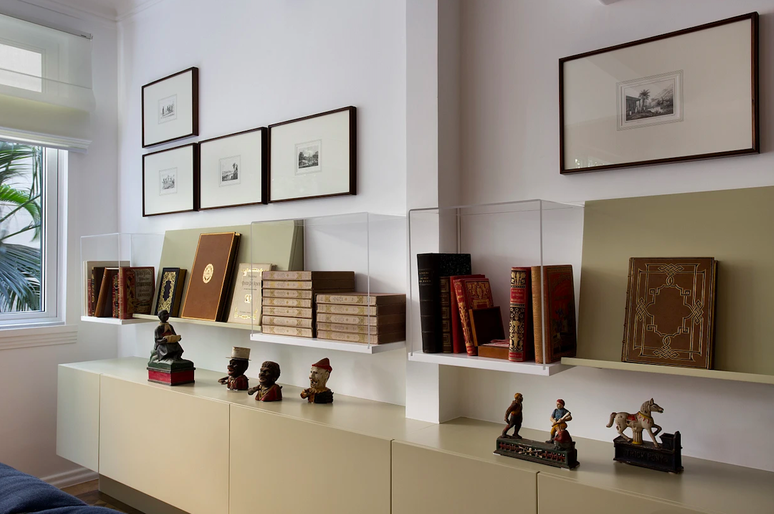
The weight each one supports is directly related to how it is positioned on the wall. Each bushing and screw can hold a maximum amount of weight. For example: 4mm bushings support up to 2kg; 5 mm, between 2 and 8 kg; 6 mm, between 8 and 14 kg; 8 mm, 14 and 20 kg and 10 mm bushings a load between 20 and 30 kg.
It is important to note that the weight supported may vary depending on the model and manufacturer of the products and that the weight supported by each of the bushings installed is added to subtract the weight of the shelf.
Overweight
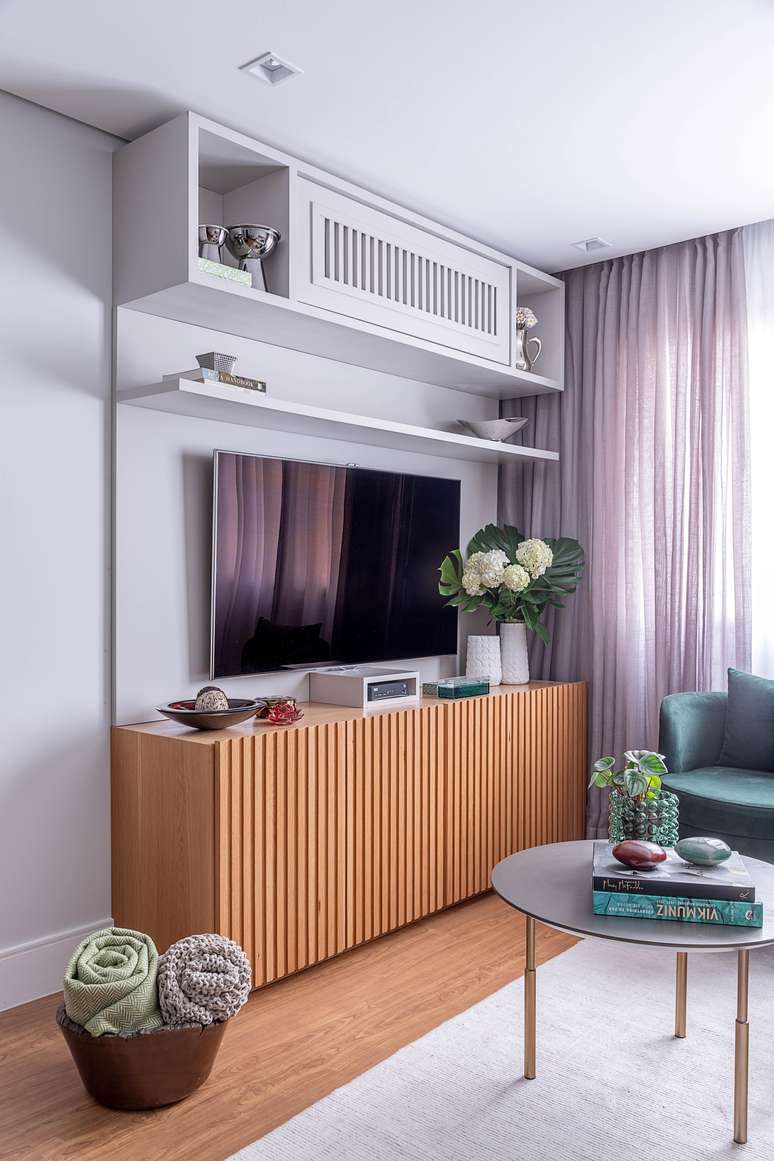
Each piece is designed to meet a specific need, therefore, they have weight and support limitations. According to Carina, the incorrect distribution of the arranged objects can damage the material, negatively affecting its durability.
“A wooden shelf full of books and objects, for example, suffers from excessive load and can bend over time. The ideal is to follow the recommendations provided by the furniture manufacturer”, concludes the architect.
Source: Terra
Ben Stock is a lifestyle journalist and author at Gossipify. He writes about topics such as health, wellness, travel, food and home decor. He provides practical advice and inspiration to improve well-being, keeps readers up to date with latest lifestyle news and trends, known for his engaging writing style, in-depth analysis and unique perspectives.

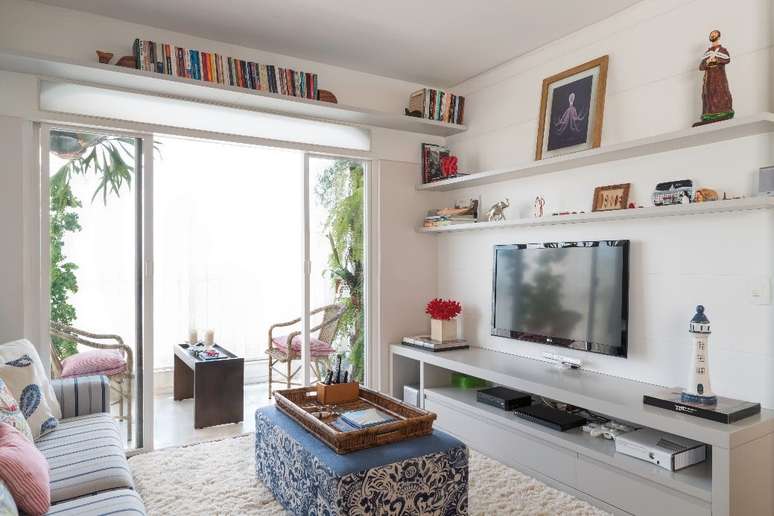




![Un Si Grand Soleil Preview: Episode Summary for Tuesday, October 21, 2025 [SPOILERS] Un Si Grand Soleil Preview: Episode Summary for Tuesday, October 21, 2025 [SPOILERS]](https://fr.web.img4.acsta.net/img/c7/7f/c77f5c02e3632e8e611d5041c2b9f36e.jpg)

